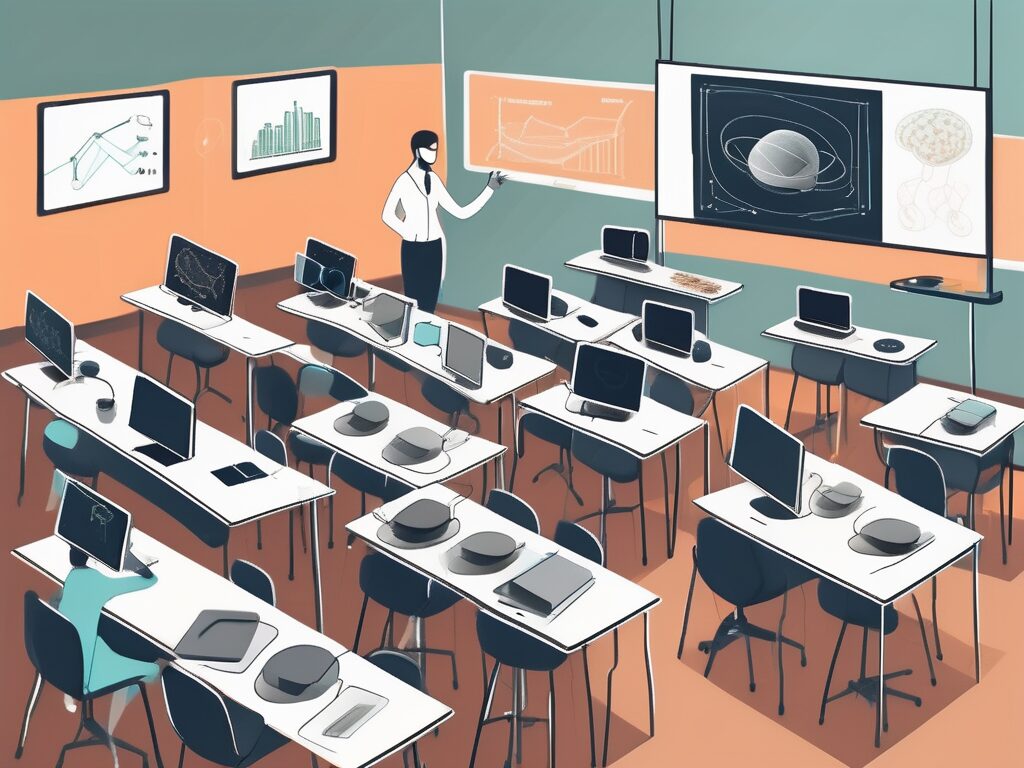In the ever-evolving world of education, it’s crucial for teachers to stay abreast of the latest innovations. The International Postgraduate Certificate in Education (IPGCE) is leading the way in this regard, introducing a range of modern teaching methods designed to enhance learning outcomes. In this blog, we’ll delve into seven of these innovative techniques, exploring how they’re transforming the educational landscape.
1. Flipped Classroom
The ‘Flipped Classroom’ model is a revolutionary approach that turns traditional teaching on its head. Instead of introducing new concepts in class and assigning homework to reinforce these ideas, the Flipped Classroom model encourages students to learn new topics at home, using class time for discussion and problem-solving.
This method allows teachers to spend more time interacting with students, addressing their individual needs and fostering a more personalised learning environment. It’s akin to swapping a lecture for a tutorial, with the teacher acting more as a guide than a lecturer.
2. Gamification
Who said learning can’t be fun? Gamification is the process of incorporating game-like elements into the learning process to increase student engagement. This could be as simple as awarding points for correct answers, or as complex as creating a full-fledged educational game.
Think of it like turning the classroom into a board game, where each student is a player trying to reach the finish line. This method not only makes learning more enjoyable, but also encourages healthy competition and motivates students to strive for better results.
3. Project-Based Learning
Project-Based Learning (PBL) is a dynamic approach that encourages students to gain knowledge and skills by working for an extended period of time to investigate and respond to a complex question, problem, or challenge. It’s a bit like turning the classroom into a laboratory, where students are scientists conducting their own research.
This method promotes critical thinking, problem-solving, collaboration, and self-management. By working on real-world problems, students are able to see the relevance of their learning and are more likely to be engaged in the process.
4. Blended Learning
Blended Learning is a hybrid teaching method that combines traditional face-to-face instruction with online learning. It’s like having the best of both worlds, with the flexibility of online learning and the personal touch of in-person teaching.
This method allows students to learn at their own pace, while still having access to the teacher for guidance and support. It also opens up a world of resources that may not be available in a traditional classroom setting.
5. Inquiry-Based Learning
Inquiry-Based Learning (IBL) is a teaching method that encourages students to ask questions and seek answers, rather than simply absorbing information. It’s like turning the classroom into a detective agency, where students are detectives solving a mystery.
This method fosters curiosity and encourages students to take ownership of their learning. By actively seeking out information, students are more likely to retain knowledge and develop a deeper understanding of the subject matter.
6. Differentiated Instruction
Differentiated Instruction is a teaching method that tailors instruction to meet individual needs. Whether it’s through flexible grouping, differentiated content, or varying levels of challenge, this method ensures that all students are able to learn effectively.
It’s a bit like a tailor fitting a suit – each student gets a learning experience that fits them perfectly. This method not only helps students to achieve their full potential, but also fosters a more inclusive learning environment.
7. Social and Emotional Learning
Social and Emotional Learning (SEL) is a teaching method that focuses on developing students’ social and emotional skills. This includes self-awareness, self-management, social awareness, relationship skills, and responsible decision-making.
Think of it as teaching students to be better human beings, not just better learners. This method not only helps students to succeed academically, but also prepares them for life outside of school.
In conclusion, the IPGCE is leading the way in modernising teaching methods. By embracing these seven innovations, teachers can create a more engaging, personalised, and effective learning environment. So, whether you’re a seasoned educator or a budding teacher, it’s worth exploring these methods to see how they can enhance your teaching practice.
Take Your Teaching Career to the Next Level with The IQTS at UWE
As you explore the forefront of educational innovation with the IPGCE, consider how The International Qualified Teacher Status (iQTS) programme at UWE can further elevate your professional journey. With the iQTS, you’ll not only meet the stringent qualification requirements of international schools but also significantly increase your chances for career advancement and salary growth. Join a thriving community of educators, gain a deep understanding of global education systems, and pursue your professional development without compromising your current work commitments. Ready to make your next step? Make Your Next Step and join the iQTS programme today.

